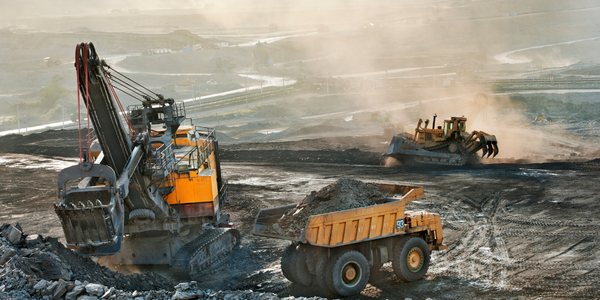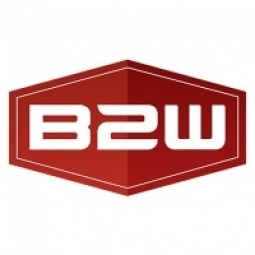公司规模
Large Corporate
地区
- America
国家
- United States
产品
- B2W Estimate
技术栈
- B2W Software
实施规模
- Enterprise-wide Deployment
影响指标
- Productivity Improvements
- Cost Savings
技术
- 应用基础设施与中间件 - 数据交换与集成
适用行业
- 建筑与基础设施
- 矿业
适用功能
- 离散制造
- 采购
用例
- 施工管理
- 需求计划与预测
服务
- 软件设计与工程服务
关于客户
Duininck Incorporated is a third-generation family business that began building roads in 1926. The company has since expanded and now includes mining and aggregate operations across the United States, as well as paving, concrete, and more. Duininck has distinct divisions based in Texas and Minnesota specializing in road and heavy highway construction, paving, concrete, golf course construction, aggregates and mining, utility work, and alternative energy. The company undertakes a high percentage of federal, state, and county projects, making Department of Transportation (DOT) bids a significant part of their operations.
挑战
Duininck Incorporated, a third-generation family business that began building roads in 1926, was initially using spreadsheets for their bidding processes. However, the company found that spreadsheets were not efficient or flexible enough to meet the requirements of their various divisions, which include road and heavy highway construction, paving, concrete, golf course construction, aggregates and mining, utility work, and alternative energy. The company also needed a solution that could integrate with their Viewpoint accounting system and provide built-in advantages for Department of Transportation (DOT) bids, as federal, state, and county projects account for a high percentage of their work.
解决方案
Duininck Incorporated decided to switch from spreadsheets to B2W Estimate, a specialized software for bidding processes. Initially, the estimators at Duininck were skeptical and created redundant bids with spreadsheets for several months after installing B2W Estimate. However, they were eventually won over by the new software's structure and layout, which Kyle Duininck, a representative of the company, described as 'elegant'. The company then gradually rolled out B2W Estimate across its various divisions. Unlike some companies that choose B2W Estimate to standardize bidding processes, Duininck found value in the software's ability to customize the structure and layout of bids. This allowed each division to adapt and optimize the structure of estimates according to the varying requirements of the customers or work types. The software also includes a database with all cost items in bid forms for every U.S. state DOT, and allows estimators to import electronic bid forms, convert estimates automatically to match the required DOT format, and then export them for submission.
运营影响

Case Study missing?
Start adding your own!
Register with your work email and create a new case study profile for your business.
相关案例.

Case Study
IoT System for Tunnel Construction
The Zenitaka Corporation ('Zenitaka') has two major business areas: its architectural business focuses on structures such as government buildings, office buildings, and commercial facilities, while its civil engineering business is targeted at structures such as tunnels, bridges and dams. Within these areas, there presented two issues that have always persisted in regard to the construction of mountain tunnels. These issues are 'improving safety" and "reducing energy consumption". Mountain tunnels construction requires a massive amount of electricity. This is because there are many kinds of electrical equipment being used day and night, including construction machinery, construction lighting, and ventilating fan. Despite this, the amount of power consumption is generally not tightly managed. In many cases, the exact amount of power consumption is only ascertained when the bill from the power company becomes available. Sometimes, corporations install demand-monitoring equipment to help curb the maximum power demanded. However, even in these cases, the devices only allow the total volume of power consumption to be ascertained, or they may issue warnings to prevent the contracted volume of power from being exceeded. In order to tackle the issue of reducing power consumption, it was first necessary to obtain an accurate breakdown of how much power was being used in each particular area. In other words, we needed to be able to visualize the amount of power being consumed. Safety, was also not being managed very rigorously. Even now, tunnel construction sites often use a 'name label' system for managing entry into the work site. Specifically, red labels with white reverse sides that bear the workers' names on both sides are displayed at the tunnel work site entrance. The workers themselves then flip the name label to the appropriate side when entering or exiting from the work site to indicate whether or not they are working inside the tunnel at any given time. If a worker forgets to flip his or her name label when entering or exiting from the tunnel, management cannot be performed effectively. In order to tackle the challenges mentioned above, Zenitaka decided to build a system that could improve the safety of tunnel construction as well as reduce the amount of power consumed. In other words, this new system would facilitate a clear picture of which workers were working in each location at the mountain tunnel construction site, as well as which processes were being carried out at those respective locations at any given time. The system would maintain the safety of all workers while also carefully controlling the electrical equipment to reduce unnecessary power consumption. Having decided on the concept, our next concern was whether there existed any kind of robust hardware that would not break down at the construction work site, that could move freely in response to changes in the working environment, and that could accurately detect workers and vehicles using radio frequency identification (RFID). Given that this system would involve many components that were new to Zenitaka, we decided to enlist the cooperation of E.I.Sol Co., Ltd. ('E.I.Sol') as our joint development partner, as they had provided us with a highly practical proposal.

Case Study
Splunk Partnership Ties Together Big Data & IoT Services
Splunk was faced with the need to meet emerging customer demands for interfacing IoT projects to its suite of services. The company required an IoT partner that would be able to easily and quickly integrate with its Splunk Enterprise platform, rather than allocating development resources and time to building out an IoT interface and application platform.

Case Study
Bridge monitoring in Hamburg Port
Kattwyk Bridge is used for both rail and road transport, and it has played an important role in the Port of Hamburg since 1973. However, the increasing pressure from traffic requires a monitoring solution. The goal of the project is to assess in real-time the bridge's status and dynamic responses to traffic and lift processes.

Case Study
Underground Mining Safety
The goal was to produce a safety system to monitor and support underground mining operations; existing systems were either too simple (i.e. phone line) or overly complex and expensive, inhibiting deployment, and providing little-to-no support in event of an accident. Given the dangerous nature of the mining work environment and the strict regulations placed on the industry, the solution would have to comply with Mine Safety and Health Administration (MSHA) regulations. Yet the product needed to allow for simple deployment to truly be a groundbreaking solution - increasing miner safety and changing daily operations for the better.

Case Study
Mining Firm Quadruples Production, with Internet of Everything
Dundee Precious Metal’s flagship mine, in Chelopech, Bulgaria, produces a gold, copper, and silver concentrate set a goal to increase production by 30%. Dundee wanted to increase production quality and output without increasing headcount and resources, improve miner safety, and minimize cost.

Case Study
Fastenal Builds the Future of Manufacturing with MachineMetrics
Fastenal's objective was to better understand their machine downtime, utilization, quality issues, and to embrace cutting-edge manufacturing technology/process improvement capabilities to bring their team to the next level. However, there was a lack of real-time data, visualization, and actionable insights made this transition impossible.



